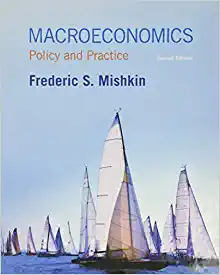Question
A friend of yours works at a US company that buys a lot of ore from mines in Mongolia. He has to travel there a
A friend of yours works at a US company that buys a lot of ore from mines in Mongolia. He has to travel there a lot to visit suppliers and after one trip he mentions, "traveling to Ulaanbaatar has gotten a lot cheaper over the last 10 years. At the beginning of 2007, one dollar bought 1200 tgrg, whereas in 2017 one dollar buys about 2500 tgrg. My dollar goes so much further now!"
Before responding to your friend, you quickly pull out your phone and look up that total inflation over that 10 year period was 150% in Mongolia and 20% in the US. (Those are cumulative totals over the 10 years, not per year inflation.)
Knowing this, is your friend right or wrong? Has it actually gotten less expensive to travel in Mongolia? Explain why, and be numerically specific about how much cheaper or more expensive Mongolia has gotten for US-based visitors. For the purposes of this question, we can think of Mongolia as a small open economy with a floating exchange rate and free capital flows.
HINT: you may want to make use of this formula for the real exchange rate (q)
Step by Step Solution
There are 3 Steps involved in it
Step: 1

Get Instant Access to Expert-Tailored Solutions
See step-by-step solutions with expert insights and AI powered tools for academic success
Step: 2

Step: 3

Ace Your Homework with AI
Get the answers you need in no time with our AI-driven, step-by-step assistance
Get Started


